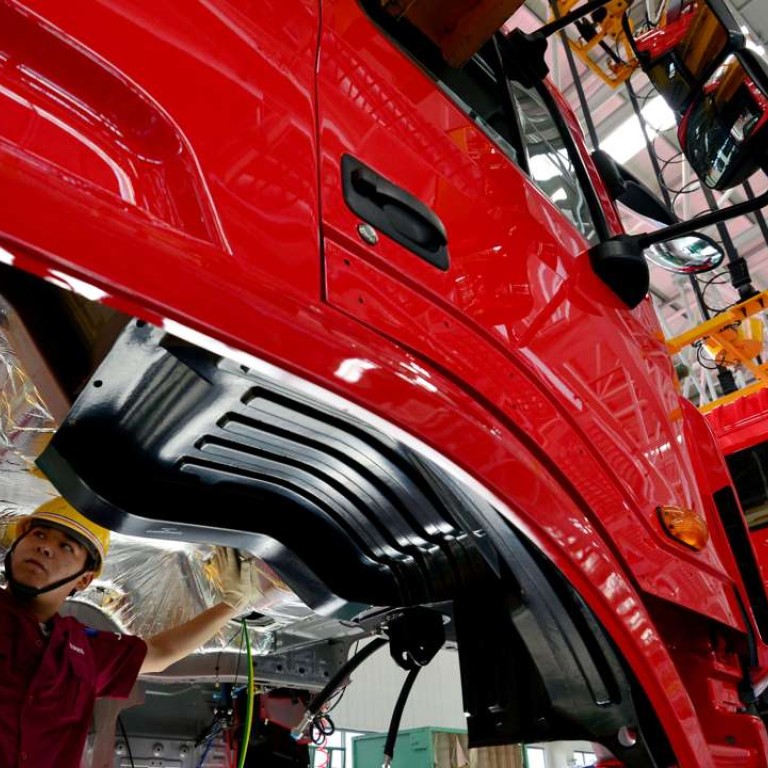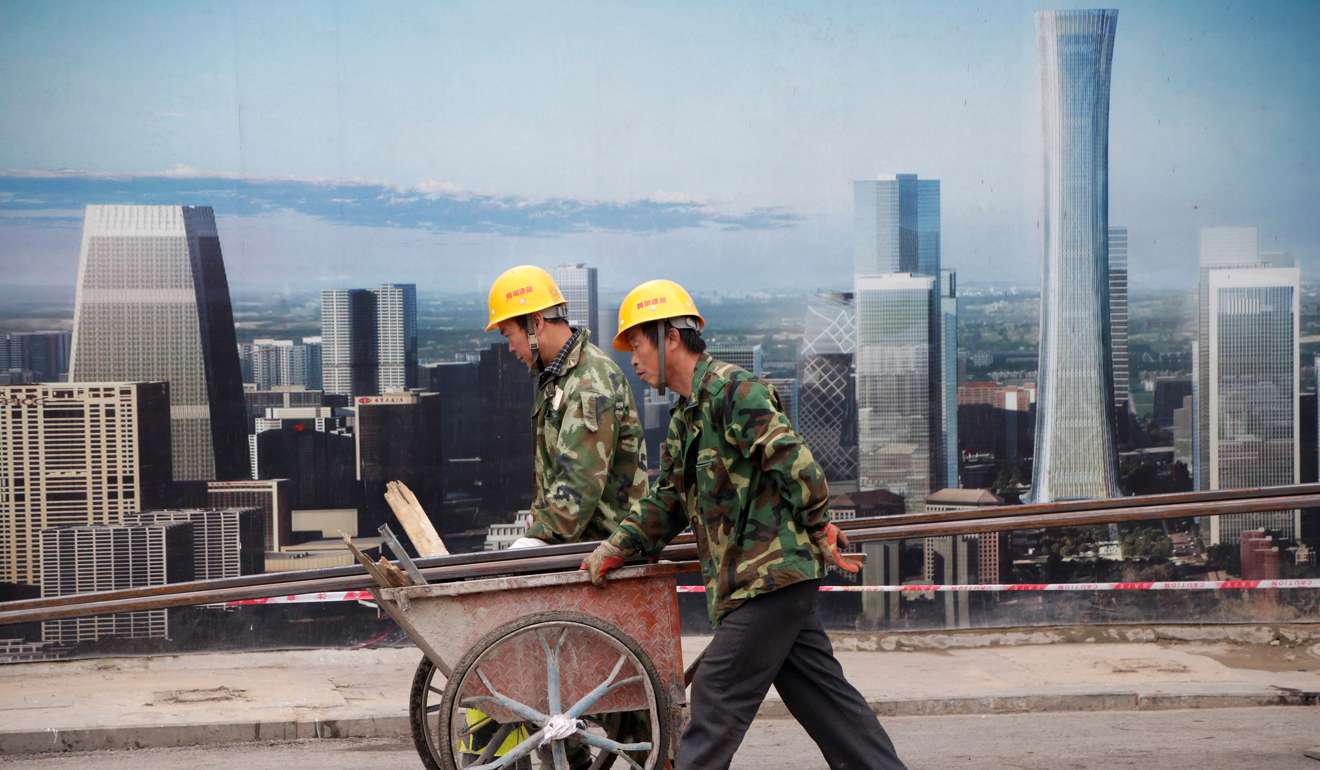
Update | China’s economic growth rebounds to near two-year high
Rise of 6.9 per cent in GDP for first quarter is well above the full-year target, but not all analysts believe the pace can be maintained
China’s economic growth in the first quarter rebounded to the highest level since the autumn of 2015, thanks to strong credit expansion and government-led spending, with monthly steel output hitting an all-time high last month.
Gross domestic product rose 6.9 per cent in the first quarter from a year earlier, according to data released by the National Bureau of Statistics on Monday, well above the 6.5 per cent full-year growth target announced in Premier Li Keqiang’s work report last month.
The leadership headed by President Xi Jinping has repeatedly pledged to reduce debt levels in the economy and to cut the nation’s bloated industrial sector over the past four years, but the numbers released by state agencies paint a different story.
Growth is still driven mainly by debt-fuelled spending and exports, while steel production amounted to 72 million tonnes in March, nearly the total output in the United States last year.
“Investment remained and will continue to be the top growth driver,” Hu Yuexiao, chief macro analyst at Shanghai Securities, said. It has raised its growth estimate for China this year to 7 per cent from 6.9 per cent after the first-quarter data.
Fixed asset investment gained 9.2 per cent year on year in the January to March period, from 8.9 per cent in the first two months. Aggregate social financing, a broad measure of credit, gained 3.4 per cent to 6.93 trillion yuan (US$1 trillion).
Despite a fall in bank loans, the country saw a surprising rebound in shadow banking credit in the period.

Infrastructure construction has been particularly strong since last year and is likely to gather further steam after Xi rolled out an ambitious plan to build a city from scratch at Xiongan New District in Hebei province.
Julian Evans-Pritchard at Capital Economics in Singapore said the strong economic showing might extend into the second quarter, but would eventually lose steam. “Property investment is going to cool down with mortgage rate increases and less demand,” he said.
State statistics agency spokesman Mao Shengyong said on Monday that measures to cool the property market introduced since October would see a more obvious impact from this month, despite first quarter property investment jumping by a two-year high of 9.1 per cent.
Zhou Hao, chief emerging markets economist at Commerzbank in Singapore, wrote in a research note that China would opt for economic moderation in the coming quarters given its efforts to prevent financial risks and market bubbles.
“Monetary policy will maintain a tightening bias in the foreseeable future,” he said.
He expected a tightening of liquidity, to tackle banks’ increased risk, rather than a rise in interest rates.

